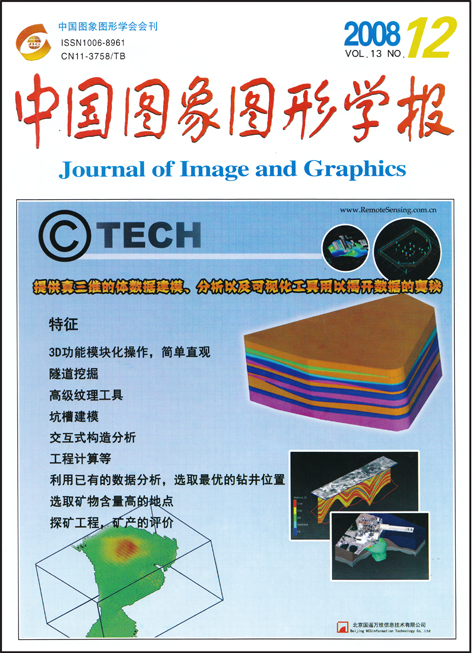
射线图像的立体匹配技术研究
摘 要
在数字射线成像检测技术中,当物体形状不适宜于旋转扫描时,传统的X射线计算机断层成像技术(CT)难以得到其3维信息,对于这种情况,立体视觉是一种较好的解决方案。立体视觉的关键技术是立体匹配,尽管目前立体匹配技术的研究已取得了很大的进展,然而这类研究主要局限于可见光等反射成像领域,对X射线图像等透射成像领域的研究很少。由于成像原理的不同,透射图像的立体匹配技术与可见光图像存在很大差异。为了对X射线图像进行正确匹配,根据射线图像的特点,首先制定了合理的立体匹配策略,并指出边缘是一种“好”的匹配基元;然后建立了射线图像立体匹配的约束条件,同时分析了射线图像匹配不确定性的原因;最后确定了由粗到精的两步匹配方法,并提出利用多目视觉约束来实现精匹配。利用工业射线像增强器系统对标准样件进行成像的实验结果表明,该技术是可行的,匹配的绝对平均误差在2pixels范围内。
关键词
Study on StereoM atching Technique for Digital Radiography Images
() Abstract
The 3D information of an object can not be obtained using the conventional computed tomography when the object is notfit for rotating scan in digital radiography (DR) inspection. So, stereo vision is a better solution. Stereo matching is an important research area in stereovision. Although stereo matching research has progressed remarkably, the studies are mostly aiming at reflection imaging field, such as visible light, and transmission imaging field, such as X ray. For the dissimilarity of imaging principle, the stereo matching technique of transmission images is different from that of reflection images. In the paper, the stereo matching technique for X ray images are studied in detail. Edge is advised to be used as matching primitive. According to the characters of X ray images, the constraints of stereo matching are set up. The reasons of matching uncertainty are analyzed. Finally, the “coarse to fine” strategy is suggested and the constraint from multi view images is used to implement fine matching. Finally, to validate the technique, digital radiography system with intensifier is used to imaging for a standard sample. The experimental results show that the technique is feasible.
Keywords
|



 中国图象图形学报 │ 京ICP备05080539号-4 │ 本系统由
中国图象图形学报 │ 京ICP备05080539号-4 │ 本系统由